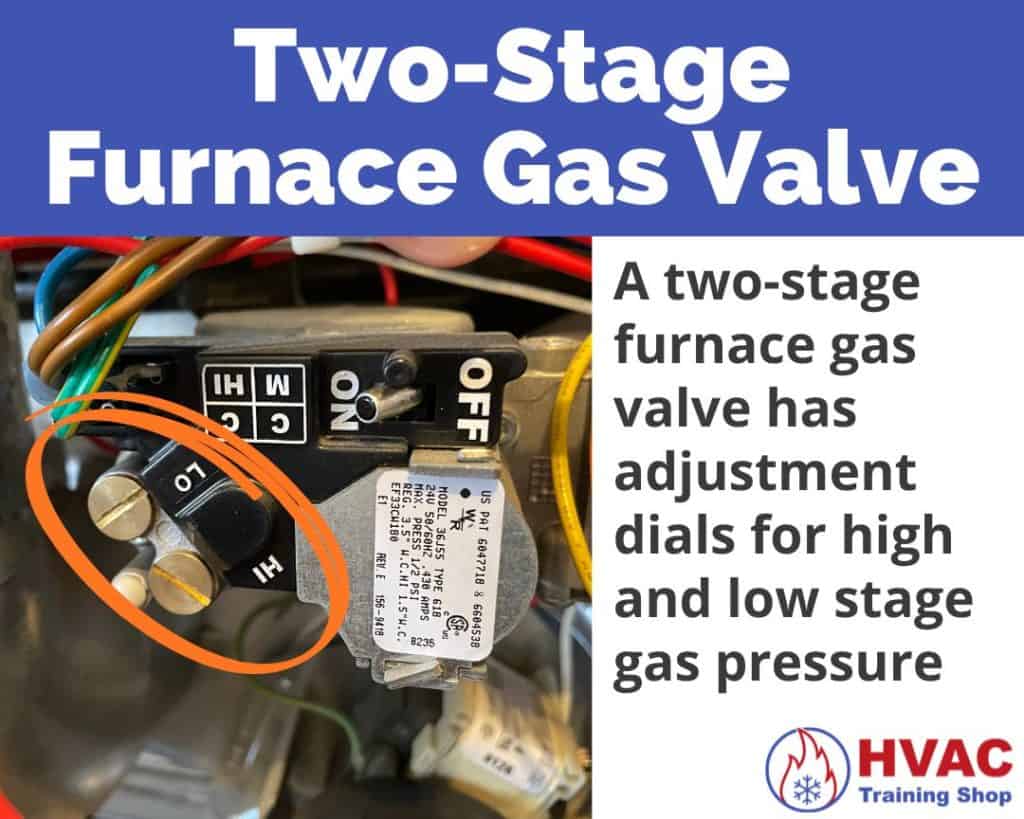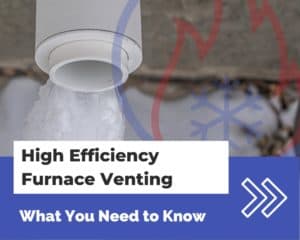When it’s time to upgrade your home’s furnace system, one of the main decisions you’ll need to make is whether you want a single-stage or two-stage furnace.
If you go out and get quotes from contractors, they’re likely to push you towards one or the other.
So you might ask yourself: What’s the difference between single-stage and two-stage furnaces, anyway?
Single-stage furnaces heat your home at 100% when they run.
Two-stage furnaces heat your home at 60-70% when they run, and ramp up to 100% only when needed.
In this article, I’ll go over how single-stage and two-stage furnaces work. I’ll also compare them against each other and discuss their pros and cons.
How does a single-stage furnace work?
A single-stage furnace heats your home at full, 100% capacity when it runs. It does this by running the fan at full speed and opening the gas valve all the way to deliver the most heat possible to your home.
A single-stage furnace has two heating modes: on and off. Even when your home only needs a little bit of heat, a single-stage furnace will run at full blast.
Because of its on/off operation, a single-stage furnace is likely to overheat your home past its setpoint temperature. Overheating your home wastes electricity and gas—causing higher energy bills.
How does a two-stage furnace work?
A two-stage furnace has two levels of heat output: high and low.
In high heat mode, a two-stage furnace behaves like a single-stage furnace, heating your home at 100% capacity.
In low heat mode, a two-stage furnace heats your home at partial capacity—usually around 60-70%.
The main advantage of using a two-stage furnace is comfort.
A two-stage furnace provides more even heat distribution and is less likely to overheat your home. This means that a two-stage furnace will be able to keep your home at a more stable temperature than a single-stage furnace.
What are the differences between single and two-stage furnaces?
Single-stage and two-stage furnaces differ in their operation. Single-stage furnaces have high heat mode only. Two-stage furnaces have high heat and low heat modes.
Single- and two-stage furnaces operate differently because they have different parts:
- A single-stage furnace contains a single-speed blower motor and a fixed (open/close) gas valve.
- A two-stage furnace contains a variable-speed blower motor and a two-stage (high/low/close) gas valve.

Single-stage furnace pros and cons
The advantage of using a single-stage furnace is mostly its low costs.
Here are the pros of using a single-stage furnace:
Single-stage furnace pros
- Lower installation cost. Single-stage furnaces will, on average, cost less than two-stage furnaces to install in your home.
- Lower maintenance cost. Single-stage furnaces are less complicated machines than two-stage furnaces, so they have cheaper parts and have simpler repairs.
Single-stage furnace cons
Even though single-stage furnaces are simple machines, they have their drawbacks. Here are some cons of using a single-stage furnace:
- Less stable temperatures. Single-stage furnaces have a harder time keeping your home at a stable temperature since they are always either 100% on or off.
- Cold spots in larger homes. Larger homes may have stagnant cold spots in them due to the fast on/off cycles of a single-stage furnace system.
Two-stage furnace pros and cons
Comfort and performance are the main advantages of two-stage furnaces.
Here are the pros of a two-stage furnace:
Two-stage furnace pros
- More comfort. Two-stage furnaces are able to keep your home at a more stable temperature. So you won’t experience drastic temperature swings as the furnace cycles on and off.
- Less cold spots. Two-stage furnaces can have a more consistent heat output, allowing the air in your home to mix more thoroughly and eliminate cold spots.
- Less noise. The low heat mode on two-stage furnaces runs quieter than high mode. Therefore, if your home doesn’t need much heat, then it will only run in the quieter low mode.
On the flip side, two-stage furnaces have their drawbacks—mostly cost.
Here are the cons of a two-stage furnace:
Two-stage furnace cons
- Higher installation cost. Two-stage furnaces will, on average, cost more than single-stage furnaces to install in your home.
- Higher maintenance cost. Two-stage furnaces will cost slightly more to maintain since they have more expensive parts. Two-stage furnaces are also more complicated machines, adding to maintenance labor costs.
Is a two-stage furnace worth it?
If you’re looking for a stable temperature and comfort in your home, then a two-stage furnace is worth it if you have the money to spend.
Two-stage furnaces will also help eliminate cold spots in your home. The low fan speed in a two-stage furnace will give more time for your home’s air to mix thoroughly.
Two-stage furnaces are also much quieter when they run at low speed, so your home won’t be as noisy if the furnace is in low heat mode.
Is a two-stage furnace more efficient than a single-stage furnace?
Two-stage furnaces are not more efficient than single-stage furnaces.
A study by the Lawrence Berkeley National Laboratory found that two-stage technology itself does not save energy.
The study found that two-stage furnaces don’t use less gas than single-stage furnaces. The study also found that two-stage furnaces actually use more electricity due to longer fan run times.
However, if the two-stage furnace has an ECM (also called BPM) fan motor, then it will use less electricity than a single-stage furnace with a PSC motor. But this is due to the fact that ECM motors are more energy efficient than PSC motors.
For more information about the differences between ECMs and PSC motors, check out my article below:



